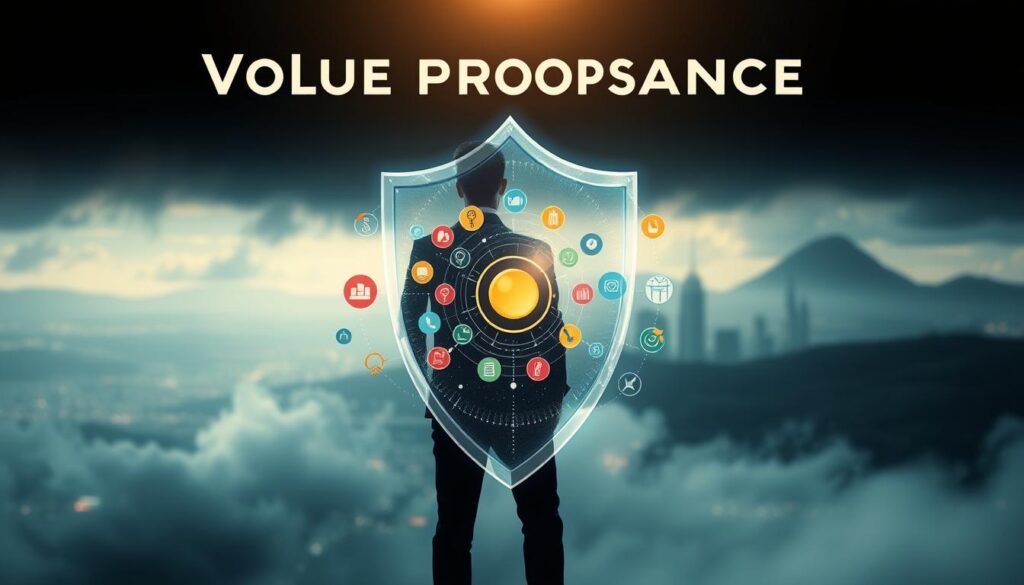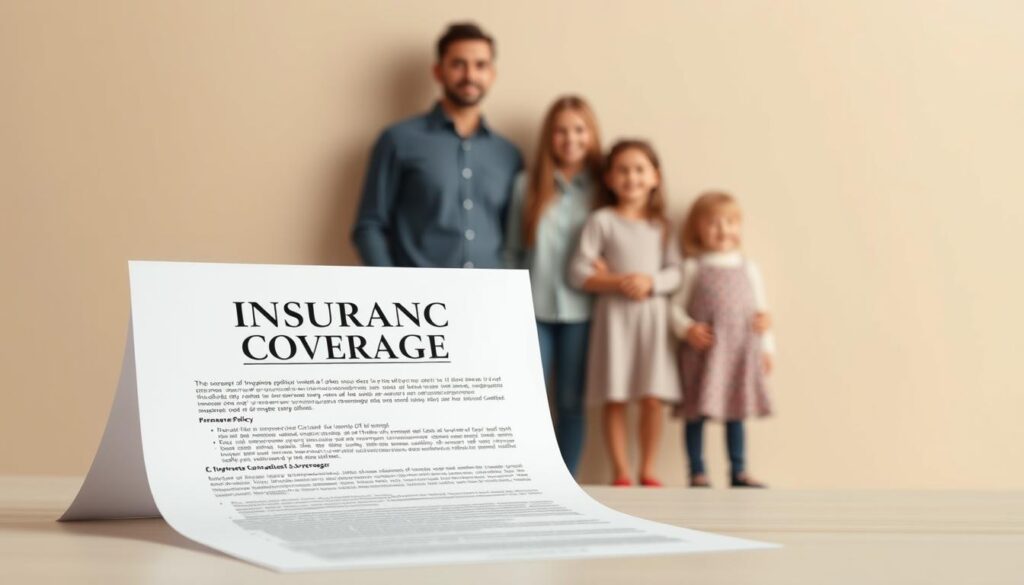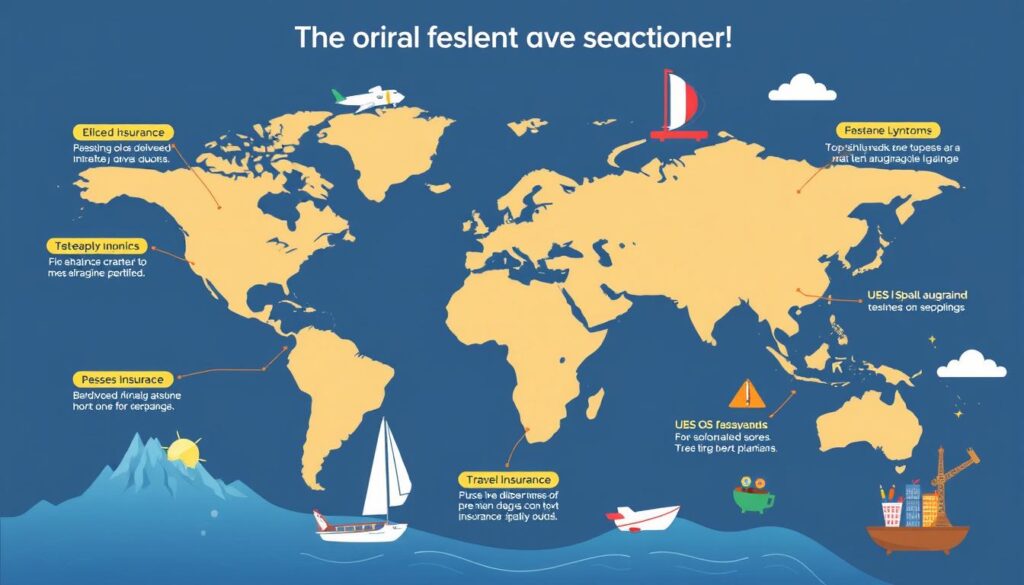Many individuals question whether purchasing insurance is merely throwing money out the window, especially when they pay premiums for years without filing claims.
Financial preparedness is crucial in today’s uncertain world, and coverage plays a significant role in it.
This article aims to debunk common myths surrounding insurance and help you understand its actual value proposition. By examining the purpose of a policy and its benefits, you’ll be better equipped to make informed decisions about your financial security.
Let’s explore the truth behind the notion that insurance is a waste of money and discover how it can be a vital component of your financial planning.
The Value Proposition of Insurance
The value proposition of insurance lies in its ability to mitigate risk and provide peace of mind. At its core, insurance is a risk transfer mechanism where individuals pay a relatively small, predictable premium to protect against large, unpredictable financial losses.
Understanding What Insurance Actually Does
Insurance works by creating a risk pool where the premiums of many policyholders cover the losses of the few who experience claims. This mechanism makes otherwise unaffordable risks manageable. For instance, health insurance covers costly medical expenses, while auto insurance protects against vehicle-related damages or liabilities.
| Type of Insurance | Primary Benefit | Example |
|---|---|---|
| Health Insurance | Covers medical expenses | Doctor visits, surgeries, hospital stays |
| Auto Insurance | Protects against vehicle damages or liabilities | Accidents, theft, vandalism |
| Home Insurance | Covers damages to property | Natural disasters, fires, theft |
The Peace of Mind Factor
Beyond financial protection, insurance provides psychological benefits through peace of mind, allowing individuals to engage in activities and investments they might otherwise avoid due to risk. This peace of mind is invaluable, as it enables people to live their lives with less anxiety about the future.

Myth #1: All Insurance is a Waste of Money
The notion that all insurance is a waste of money is a misconception that overlooks the financial protection it offers. While it’s true that some insurance policies may not provide significant value, others are crucial for financial security.
Understanding the distinction between essential and non-essential coverage is key to debunking this myth. Certain insurance policies protect against catastrophic risks that could lead to financial ruin.

The Difference Between Essential and Optional Coverage
Essential insurance policies, such as health, home, or liability insurance, safeguard against significant financial losses. In contrast, optional coverage for minor risks or easily replaceable items may not be as valuable relative to their cost.
- Essential policies protect against major financial risks.
- Optional coverage may be less valuable for minor or replaceable items.
How to Identify Truly Valuable Insurance Policies
To determine whether an insurance policy is worthwhile, evaluate the potential financial impact of the risk versus the cost of the coverage. Insurance becomes valuable when it protects against risks you cannot afford to bear yourself.
Key considerations include:
- The likelihood and potential impact of the risk.
- The cost of the insurance policy relative to the risk.
Myth #2: You’re Always Better Off Saving Money Instead of Buying Insurance
The notion that saving money is always superior to buying insurance is a misconception that warrants examination. At its core, this myth pits the strategy of self-insurance against the purchase of insurance products. Our philosophy is straightforward: you should always buy the minimum amount of insurance you need to sleep well at night. Doing so can save you hundreds, if not thousands, of dollars annually, as some insurance is indeed a waste of money.
One of the primary concerns with the “save instead of insure” approach is its failure to account for the timing of risks. Catastrophic events can occur before you’ve accumulated sufficient savings, leaving you financially vulnerable. In contrast, insurance provides immediate protection against such risks.
The Mathematics of Risk Management
The mathematics of risk management reveals that for high-impact, low-probability events, insurance offers more efficient protection than savings alone. By pooling risk across a large number of individuals, insurance companies can provide coverage at a lower cost than if an individual were to save for the potential loss alone. This is particularly relevant for events that could result in financial ruin, such as major medical expenses or significant property damage.
For instance, saving for a potentially catastrophic event that occurs once in a lifetime might not be feasible for many individuals. Insurance, on the other hand, allows you to transfer this risk to the insurer in exchange for a premium, thereby managing your financial exposure effectively.
When Self-Insurance Makes Sense (and When It Doesn’t)
Self-insurance works well for predictable, manageable expenses, such as routine car maintenance or minor medical costs. However, it falls short for catastrophic risks that could cost hundreds of thousands of dollars. A balanced approach often combines insurance for major risks with savings for smaller, more predictable expenses. Understanding when self-insurance makes sense requires analyzing both the potential financial impact of a risk and your current financial capacity to absorb losses.
For example, if you have a stable financial foundation and can afford to cover minor losses, self-insuring for those risks might be sensible. Conversely, for risks that could lead to financial devastation, such as a major lawsuit or significant health crisis, having adequate coverage is crucial.
Myth #3: Insurance Companies Never Pay Claims
The notion that insurance companies never pay claims is a widespread misconception that can deter people from securing necessary coverage. In reality, insurance companies pay billions in claims annually, as their business model depends on honoring legitimate claims while screening out fraudulent ones.
The myth likely stems from misunderstandings about policy terms and conditions rather than systematic claim denials. Most claim denials occur because the specific situation falls outside the policy’s defined coverage or exclusions, highlighting the importance of understanding what you’re buying.
Understanding Policy Terms and Conditions
Many insurance policies, such as travel insurance, have restrictions and exclusions that can leave you with unexpected expenses if a problem arises during your trip. For example, some policies may exclude coverage for pre-existing medical conditions or adventure sports activities. It’s essential to review the policy carefully and ask questions before committing to coverage.
Carefully reading and understanding policy terms before purchase can significantly improve claim success rates. This includes being aware of what is covered and what is not, as well as any conditions that must be met to make a valid claim.
How to Maximize Your Chances of Successful Claims
To maximize your chances of successful claims, it’s crucial to maintain accurate documentation and promptly report incidents. Researching the insurance company‘s reputation for claim handling through resources like J.D. Power ratings or state insurance department complaint ratios can also help identify insurers with better claim payment records.
By understanding the terms of your policy and taking steps to ensure you’re well-informed, you can significantly improve your chances of a successful claim. This proactive approach helps to navigate the complexities of insurance claims effectively.
Myth #4: All Insurance Products Offer Equal Value
Not all insurance products are created equal; some offer substantial protection, while others provide minimal benefits. The value of insurance products can vary dramatically based on the type of coverage, the cost of the policy, and the individual’s circumstances.
High-Value Insurance Products
High-value insurance products are those that protect against significant financial risks. For instance, health insurance can be crucial in covering medical expenses that can be financially crippling. Similarly, home insurance can protect homeowners from losses due to natural disasters or other damages. These types of insurance policies are considered high-value because they provide substantial financial protection against risks that are potentially catastrophic.
- Health insurance for covering medical expenses
- Home insurance for protecting against property damage
- Life insurance for providing financial security to dependents
Low-Value Insurance Products to Avoid
On the other hand, some insurance products may not offer significant value. For example, insurance for specific electronic devices or extended warranties on appliances might not be cost-effective, as the cost of the insurance might outweigh the potential benefits. It’s essential to evaluate the likelihood and potential impact of the risk, the cost of coverage, and your personal financial situation before purchasing any insurance product.
- Extended warranties on appliances
- Specific electronic device insurance
- Travel insurance for domestic trips
Myth #5: You Need Every Type of Insurance Offered to You
Insurance companies often present a wide array of insurance products, leading some to believe they need it all. However, purchasing every type of coverage offered can be financially inefficient and unnecessary for most consumers.
The insurance industry creates numerous specialized products, but buying every type can lead to over-insurance. Over-insurance occurs when you pay for redundant coverage or insure against risks that wouldn’t significantly impact your financial situation.
The Dangers of Over-Insurance
One of the primary dangers of over-insurance is the unnecessary expenditure on insurance policies that don’t provide significant benefits. Insurance companies and agents often have financial incentives to sell additional coverage, which may not always align with your best interests.
- Paying for redundant or unnecessary insurance can drain your finances.
- Over-insurance can lead to a false sense of security, causing you to overlook more critical financial planning.
Creating a Personalized Insurance Strategy
To avoid the pitfalls of over-insurance, it’s crucial to create a personalized insurance strategy. This involves identifying your specific risk exposures based on your assets, liabilities, dependents, and lifestyle. By doing so, you can make informed decisions about which types of insurance are truly necessary, potentially saving you money in the long run.
Regularly reviewing your policy and adjusting your insurance portfolio as needed helps ensure you’re not wasting money on unnecessary coverage.
Insurance Products That May Be a Waste of Money
It’s crucial to differentiate between valuable insurance coverage and products that are a waste of money. Many insurance products are sold with the promise of providing financial security, but not all of them deliver on that promise. In fact, some common insurance products may offer minimal value relative to their cost, often duplicating coverage you may already have through other policies or credit card benefits.
Rental Car Insurance
Rental car insurance is frequently unnecessary as your personal auto insurance policy and many credit cards already provide collision coverage for rental vehicles. If you have comprehensive and collision coverage on your personal vehicle, it’s likely you’re already protected.
Extended Warranty Coverage
Extended warranty coverage for electronics and appliances typically offers poor value. The cost of this coverage often exceeds the statistical likelihood of needing repairs during the extended period, making it an unnecessary expense for many consumers.
Flight Insurance
Flight insurance is largely redundant as airlines are legally required to compensate passengers for cancellations. Moreover, accidental death coverage is usually included in existing life insurance policies, making flight insurance an additional, unnecessary cost.
Understanding these low-value insurance products can help consumers avoid unnecessary expenses and focus their insurance budget on more meaningful coverage. By being informed, you can make smarter decisions about your insurance needs.
Auto Insurance: What’s Worth It and What’s Not

When it comes to insuring your vehicle, it’s crucial to distinguish between valuable coverage and unnecessary expenses. Auto insurance contains several coverage components that vary significantly in their value proposition depending on your specific circumstances and vehicle.
The value of certain insurance components changes as your car ages. For instance, collision coverage becomes less valuable for older vehicles as the car’s value decreases.
Assessing Collision Coverage for Older Vehicles
Collision coverage is a critical component of car insurance, but its value diminishes as your car ages. The maximum potential payout (the car’s actual cash value minus your deductible) decreases while premiums remain relatively stable. A practical guideline is to consider dropping collision coverage when the annual premium exceeds 10% of your car’s value minus your deductible.
Evaluating the Necessity of Personal Injury Protection
Personal Injury Protection (PIP) may be redundant if you have comprehensive health insurance and disability coverage. However, it remains mandatory in some no-fault insurance states. It’s essential to assess your existing health and disability coverage before deciding on PIP.
Life Insurance: Separating Value from Waste
Life insurance serves as a financial safety net, but determining its value requires a closer look at the different types of policies available. With the myriad options on the market, understanding the nuances of life insurance is crucial for making informed decisions about your financial security.

Whole Life vs. Term Life: Which Offers Better Value?
The debate between whole life insurance and term life insurance centers around cost, coverage duration, and investment potential. Term life insurance typically offers better pure insurance value, providing higher death benefits at lower premiums without the investment component of whole life policies. On the other hand, whole life insurance combines insurance with a savings component, offering a guaranteed payout but often at higher premiums and potentially lower investment returns compared to dedicated investment vehicles.
When evaluating life insurance, it’s essential to consider your specific needs and financial goals. Term life insurance may be more suitable for those seeking affordable coverage for a specific period, while whole life insurance might be preferred by those looking for a lifetime coverage with a cash value component.
When Life Insurance Becomes Unnecessary
Life insurance is not a one-size-fits-all solution and becomes less necessary as you age, particularly after retirement when dependents are no longer reliant on your income and you’ve accumulated sufficient assets. It’s crucial to regularly assess your life insurance needs based on your current financial situation, obligations, and goals. This ensures that you’re not wasting money on unnecessary coverage and allows you to adjust your policy as needed to maintain optimal financial security.
Travel Insurance: When It’s Worth the Investment

For travelers venturing abroad, insurance can provide essential protection against unforeseen circumstances. Travel insurance is particularly valuable for international trips where medical emergencies could result in catastrophic expenses not covered by domestic health insurance.
International vs. Domestic Travel Coverage
International travel insurance becomes particularly valuable when visiting countries with high healthcare costs or remote locations where emergency evacuation might be necessary. In contrast, for domestic travel, comprehensive travel insurance often represents poor value as many risks are already covered by existing policies or credit card benefits.
Credit Card Travel Benefits You May Already Have
Many premium credit cards include travel benefits such as trip cancellation, lost luggage reimbursement, and rental car coverage, potentially eliminating the need for separate travel insurance. For instance, credit cards like Chase Sapphire Preferred, Citi Prestige, and Citi ThankYou offer some type of trip cancellation protection. Before purchasing travel insurance, it’s essential to check what type of trip coverage your credit cards offer.
Pet Insurance: A Critical Analysis

With the increasing costs of pet care, the question of whether pet insurance is worth the cost is becoming more relevant. Pet insurance is designed to help cover the cost of veterinary care for pets, but its value depends on several factors, including the type of pet, its age, health, and breed.
Pet owners must conduct a careful cost-benefit analysis when considering pet insurance. According to a study by Consumer Reports, for a hypothetical 10-year-old Beagle, most pet insurance policies would have cost more than the actual veterinary expenses incurred over the pet’s lifetime.
The Cost-Benefit Analysis of Pet Insurance
The cost-benefit analysis involves evaluating the premiums paid against the potential benefits. Key points to consider include:
- Pet insurance requires careful cost-benefit analysis as premiums can exceed the statistical value of potential claims for many pet owners.
- Pet insurance policies often contain significant exclusions for breed-specific conditions, pre-existing conditions, and preventative care, limiting their practical value.
- The value of pet insurance increases for certain high-risk breeds prone to expensive health conditions or for owners who would pursue any treatment regardless of cost.
Alternatives to Traditional Pet Insurance
For some pet owners, alternatives to traditional pet insurance may offer better financial outcomes. These include:
- A self-insurance approach through a dedicated pet emergency fund, which offers greater flexibility and potentially better financial outcomes for many pet owners.
In conclusion, whether pet insurance is worth the cost depends on individual circumstances. Pet owners should carefully evaluate their pet’s needs and consider alternative strategies before making a decision.
Conducting Your Own Insurance Audit
To ensure you’re getting the best value from your insurance, it’s crucial to conduct a thorough audit of your current policies.
This process involves reviewing each policy to identify unnecessary coverage, overlapping policies, and potential gaps in protection.
Step-by-Step Guide to Evaluating Your Current Coverage
Begin by compiling a comprehensive list of all your insurance policies, including the monthly premium and total policy cost.
Evaluate each policy against your current life circumstances to determine its relevance and value.
Identifying and Eliminating Redundant Policies
Look for redundancies where multiple policies cover the same risk.
For instance, check if your credit cards offer insurance benefits that overlap with your existing policies.
Once you’ve identified unnecessary coverage, cancel it promptly to save money.
| Insurance Type | Monthly Premium | Total Policy Cost | Coverage Details |
|---|---|---|---|
| Health Insurance | $200 | $2,400/year | Doctor visits, hospital stays |
| Auto Insurance | $150 | $1,800/year | Collision, liability |
| Home Insurance | $100 | $1,200/year | Property damage, theft |
By conducting a thorough insurance audit, you can save money by eliminating redundant policies and ensuring you have the right coverage in place.
Making Smart Insurance Decisions for Financial Security
As we navigate the complex world of insurance, making informed decisions is crucial for achieving financial security. To make smart insurance choices, it’s essential to strike a balance between protecting against catastrophic risks and avoiding unnecessary coverage for manageable expenses. The fundamental principle of insurance value lies in safeguarding against financial losses that you cannot afford to bear yourself. Regularly reassessing your insurance needs as your life circumstances change ensures your coverage remains aligned with your actual risks. By prioritizing high-impact coverage, such as health and liability insurance, and self-insuring for smaller risks, you can optimize your insurance spending and integrate it into a comprehensive financial security plan that includes emergency savings, investments, and debt management, thus making the most of your money and policy.

